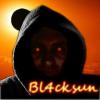
Posted
I downloaded the demo version of HN2 about a week ago after reading it could take my melody and create chord progressions for it. I wanted to buy the software right away after reading that but decided to try it first.. And boy am I glad i tried it first. It is the most non user friendly software ever. It reminds me of those old midi keyboards you'd buy from K-Mart which would play accompaniment when you pressed single key with left hand. In a week I couldn't get through its settings and get it to write a single note worth using. There is no proper documentation to teach you how to start your own song from scratch and go on with it. User manual provided is nothing more than a dictionary telling you what terminology used means which they created for some reason. I cleaned up the silly demo song they icluded and imported a single track midi melody I wrote in reasoın hoping I could go work on it but somehow I hear nothing from chords even after I add more tracks and assign sounds to them. All I hear is my own melody. If you have a video that can start a song from zero with a melody and show us how to go about it I will consider buying it. Otherwise it is no use to me... One can learn chord progressions by the time they learn HN2. Oh BTW no one cares what the animal logo means, you should teach your software better in that space. Thanks for wasting my week !!
Seitennummerierung
Do., 16.07.2015 - 18:31 Permalink
Thanks for your feedback. It comes at the right time, as we are currently building a new site specifically for more and better tutorials. Your are correct, there's a serious lack of videos and tutorials for HN2. I acknowledge that we need to provide better documentation. The user manual is more like a reference manual, than a step-by-step cook book.
somehow I hear nothing from chords even after I add more tracks and assign sounds to them.
That's probably because you didn't also assign phrases to them. The instruments would not 'magically' play something random after you assign a harmony. You need to assign a phrase (record one, or pick it from the library), or, if you want plain sustained chords, set it's Interpretation parameter to generate Auto-Chords, or Auto-Bass.
If you have a video that can start a song from zero with a melody and show us how to go about it I will consider buying it.
Starting with a melody is a popular workflow that will be covered by new videos. Other workflows include starting with surfing the palettes and filling the resulting progression with phrases.
It reminds me of those old midi keyboards you'd buy from K-Mart
Well, that's the cheap default GM Synth sound. Making a cool demo song is impossible unless we shipped a ton of sampled instruments along with the software.
If you get stuck or have questions, just drop support an email. We provide support also to demo users. No need to "waste a week" ;-)
Fr., 17.07.2015 - 14:29 Permalink
Great thanks for taking the time to answer. I wish you had those videos now. I have a work I need to finish fast. I guess I'll have to record them manually.
Fr., 17.07.2015 - 20:34 Permalink
A video is all explaining easier...improving the user interface could be helpful
You must bring the basis patterns and the figure pattern together ..better is to add a new tab and name it figure library
So you get two new tabs : Figure library and Basis library together with the Instr. tab and parameter tab.. 4 tabs in total.
How those two libraries: Figure and basis works out in Harmony navigator ... it is that the basis library has already assigned instrument to it , while the figure library has not instruments assigned to it
When a user can handle this, then working with the rootcontainer and the songsections (how many? : free to choose) becomes important ... bringing the parameter figure in a songsection container ( choose a songssection container) by taking a snapshot from the current parameter tab with the snapshot button.
A songsection container can be filled with all sorts of parameters by snapshotting them can be checked by the user, because in the songsection container there is green line to see from the choosen parameter.
Fr., 24.07.2015 - 08:56 Permalink
"Thanks for wasting my week !!"
This kind of attitude won't get you anywhere. On cognitone's youtube channel you cand find a lot of videos to get you started with both Synfire and HN. Every user feels lost at the very beggining. It took me several weeks of demo prolonguation and 3-4 times of reading the manual to get me started, but now Synfire it's one of the most important tools in my arsenal. Most of the times, when I do remixes, I only have the vocal melodic line. Synfire (HN, in your case) is a unique tool in finding the most musical chords (nobody knows that I am actually not even touching the keyboard anymore :)) ). I was in your shoes.. wanted to give up using Synfire, but one night I have pulled the trigger and bought it. It was definitely a huge investment then, but I have recouped it in a short time. I have build my own libraries and that's the juice of using Cognitone products. This is the best tool for musicians.Period!
Use a phrase ( from a midi file/ library or record one), harmonise it, assign great tones to it ( I use it in conjunction with Logic and Cubase) and always use great tones from Kontakt libraries. Alicia's Keys piano is a great one, for example. I always use the best tones so even the silliest melodies sound great!
Have patience, ask in the forum with the right attitude and you'll be thanking yourself later!
Fr., 07.08.2015 - 10:39 Permalink
Maybe this is not the right thread for this, but it relates to everything said here, and a few more things.
I was also ready to give up, thinking it may not be worth the time investment, then thought about offering to learn the program well and create a nice set of tutorials to get the beginner up and running [I'm reasonably good at that kind of thing] in exchange for a license, since I have the time right now, but not the money for synfire. That way at least it would make the learning curve possibly worth the time, as well as pave a way for others.
I say this because I'm not certain now that synfire is what I was looking for exactly. I mean, everything seems to have a kind of "avant-garde" sound to it -not the right term maybe - but not really up my alley of well cooperating cohesive melodic lines like in pop music [think Il Divo, BeeGees, Loreena McKennett, John Denver, etc]. Are there any examples anyone has done that are more pop style oriented? I'm wondering how well the program can streamline the task of looking for musical phrases that can't just be thrown together in a bucket of harmony as it were. Maybe that's a poor description, and I mean no disrespect for the program, but I don't know how to explain it. I do like the program though, and had been wondering if something like this were possible a long time ago. If I had the money I would definitely just buy it for another tool in my arsenal, to learn eventually.
I found synfire while searching for software to help with writing counterpoint lines, as they are quite a tedious thing to compose and make flow together well. I know that if I just try out enough lines, including the position of those lines, I can find something, but I can also do that with my DAW software, in the same way I would do it with synfire. Or maybe I am missing some knowledge of tools & features?
Fr., 07.08.2015 - 20:10 Permalink
hey ivyhome,
not pop, but definately not avant guard lol, you can check out my stuff, most of it was done with synfire and there is a right mixture of genres on there...
soundcloud.com/blacksun
Please note that I am not a musician and am deaf to all frequencies above 8khz (degrades from 2khz upwards), but Im pretty pleased with the stuff i can do with synfire. The early pre synfire stuff is gone from my soundcloud page, but hopefully you can still hear improvements with the newer stuff as I get more familiar with synfire and better at production. Its very expensive, but cheaper than the cheapest hardware synth I have and well worth it in my opinion.
If you go to soundcloud.com/blacksun/tracks you will find all tracks, newest to oldest.
Sa., 08.08.2015 - 09:12 Permalink
You can also check soundcloud.com/codetronx (all with Synfire) in a variety of styles.
Sa., 08.08.2015 - 11:40 Permalink
Blacksun and Codetronx: ok, I will go find your music and give it a hark.
A few hours after posting my 1st comment it began to dawn on me that I might be very wrong about synfires abitlity to create counterpoint. So I'll be investigating that more. Also, it's not that I feel the program is too expensive, just that I would be using the rent money right now, and music is not a paying job for me...so not much of a choice there. I wouldn't be surprised if a program like synfire cost $3-5,000. Probably the reason music programs have stayed in a low range is that most musicians are not being paid to do it, whereas many 3D graphic programs are upwards of $2-3 grand, because there are more paying jobs for users.
Sa., 08.08.2015 - 13:36 Permalink
User SoundForSoul does pop music with Synfire.
Dont let the orchestral counterpoint examples confuse you. That style is especially useful for showcasing Synfire's capabilities.
Mo., 10.08.2015 - 16:22 Permalink
Incorrect. SoundForSoul does commercial Dancemusic / electronic Dance-Pop. Kinda.
But 2nd OP stated: pop like Divo, BeeGees, Loreena McKennett, John Denver, etc
which is something completely different ***obviously***.
Starting with one is completely electronic, the others (nearly) completely acoustic.
Work needed to get A or B done is completely different and not comparable at all.
BTW: I also know and like music from Loreena McKennitt (thats the correct spelling btw... )
but good luck doing stuff like this without (the ability of) recording real instruments.
(And being Irish ;) )
Best,
tL.
Mo., 10.08.2015 - 23:51 Permalink
- I should have just said "easy listening". Scratch the list I gave - it doesn't really represent what I was after so much - I couldn't think of anything specific that describes all by itself what I'm trying to do. Is there a "divo"? I meant IL DIVO - they are a classical pop group - 4 guys like Pavarotti, Julio Eglasias, etc... sort of, backed up with orchestra, and sometimes Celine Dion adding a part.
Di., 11.08.2015 - 03:14 Permalink
well synfire can't sing, it can't do audio, those parts have to be kept in your daw.
however what you can do is convert the vocal audio into midi and import those lines. These can be used in synfire with the harmoniser to create the other musical parts. remove the midi derived from the audio, master it and hey you have a hit.
most of my tracks with vocals were done like that and also the guitar and drums from sounds of a distant earth were audio tracks.
but you will have to take care of sourcing vocal talents similar to Pavarotti.
Di., 11.08.2015 - 14:49 Permalink
remove the midi derived from the audio, master it and hey you have a hit.
Lol. Yeah, right.
Mi., 12.08.2015 - 15:19 Permalink
Hi guys, especially sahinderun. I'm in similar situation. I saw promo videos for Synfire and was amazed. I decided to buy Synfire express but as sahinderun I'm not able to do anything with it. I simply don't know how. Every tutorial shows something I can see different way or not at all. Still running in circles with setup, plug ins, assignement but every click takes me round back. From VSTs I can see just some Cales instrument, nothing more. Whole bunch of windows around everything, most of them doubled and one get lost in it totally. In tutorials I can see a guy choosing many instruments but I don't see any except that damn Cales. I downloaded free Kontakt with VSTs but cannot see them in Synfire and after hours of reading manual I'm still on the same spot - nowhere. Besides the guy making the tutorials often says that he choose some presets he has done before. But I don't have any for God sake. And I don't know how to do some because I don't see the same things in the menu as the tutorials show. Why don't you lead beginners step by step, showing them how to setup all what's needed (without any DAWs because I don't have the same) and start to create a song from the scratch as sahinderun said?
I imagined that I can import some midi notes from my DAW, some vocal audio file and work on chords in Synfire but how can I do it?
I'm Propellerhead Reason user and I know that I cannot use drones as other users but import some stuff to Synfire, compose what I want and export midi back to Reason should do. Or am I wrong here? I've tried to use ReWire to connect Synfire with Reason to bring audio from Reason to Synfire - Synfire doesn't see it :(
I was happy I found software that will help me compose faster but I'm confused, lost and cannot get anything usefull from it after 3 days desperate intensive trying.
Is there any good resources for understanding this software for newcomers? Thank you all.
Mi., 12.08.2015 - 19:34 Permalink
HI Dan,
just a couple of tips/observation/experience from a user, hopefully this will help a little.
Synfire cant do anything with audio at all.
Synfire uses rewire to sync the transports between the daw and synfire with synfire controlling things, so you can click play in synfire and have it start the daw. You can click play from any point in the project and the daw should play from that point to. Synfire has to be in control (not sure if that makes it a master or slave rewire device).
Keep all your audio in the daw.
Synfire has three main ways of making sound, via plugins hosted in the synfire engine, pluggins hosted in synfire plugins (drones) which are hosted by your daw and lastly via a synfire plugin (hosted in the daw) which is set as a midi drone, the daw then routes the midi to a daw or external instrument. That being said, it can also drive midi ports directly (from the engine) including loopback midi ports.
It is best not to mix engine and daw drones as that way lies syncronisation issues
Reason doesnt support vst or au pluggins so reason users are limited to midi connections only in the engine (see note above about mixing engine and non engine stuff)
Regardless of what makes the sound, the drones/engine pluggins are arranged into racks, there is a global one shared by all projects and each project has their own too. The rack uses instrument definitions which can include all sorts of things such as patch settings and names, articulation key switches, etc.. but at their simplest they just say what category of instrument it is, what the playing ranges are and the instrument name.
I think the engine expects the pluggins to be in the standard 'place' if you have used a custom folder then either copy them to the standard place or see if you can change the location in synfire's engine configuration (not sure if this is possible, never tried it as I keep to the standard locations).
There were a lot of videos available that showed how to use loopbe (which is a loopback midi virtual cable system for windows) and the standard apple loop back midi cables, to setup instruments as that used to be the only way of doing things. Not sure if any are still around but this is the way you will have to work if you want to work with reason unless you go with the import into synfire, export from synfire, import into reason route.
Also check out the wiki as there are some user videos that may help you with reason.
Good luck with the software, it is a very steep learning curve but it helps to remind yourself it isnt a daw. Once you 'get it' you will find your workflow will improve, as will the songs you produce.
Mi., 12.08.2015 - 20:36 Permalink
Hi Dan Topic,
Getting started with Synfire is especially a challenge for users of Propellerhead Reason, because, in contrast to Reason, Synfire doesn't ship with a ton of sounds and synths that are ready to use out of the box. This leaves new users with some housekeeping tasks to do before they can actually start composing (setup plug-ins and sound libraries).
I see that this can be confusing and difficult, if you are used to finding all sounds in a software after installation, ready to use. Or if you do not own any VST/AU synths yet. After you got your initial sound setup running however, you will see a big increase in progress.
Please start a new thread, if you want us to assist you with setting up your first racks and get started. We'll be happy to get you past the initial confusion.
Mi., 12.08.2015 - 20:40 Permalink
There were a lot of videos available that showed how to use loopbe (which is a loopback midi virtual cable system for windows) and the standard apple loop back midi cables
These can be found under HN2 (Harmony Navigator), which still uses MIDI loopback.
BTW: Thanks blacksun for your great contributions to the user forum.
Mi., 12.08.2015 - 22:50 Permalink
Thank you guys. Perhaps I thought it will be easier to jump in and create soon. I have to go through the program and manual much deeper, set up all properly (though I will have it harder with Reason) but still I'm convinced Synfire is great tool once understood and set. I will go for it and won't give up. WIll be nice if I can ask something unclear time to time.
Thanks again for your support and explanation.
Fr., 14.08.2015 - 12:25 Permalink
Hi again guys. I have last question to this thread. Than I'll start a new one where I probably will have more questions during my starting process with Synfire.
Weekend is comming so I decided to use it to dive deeper into Synfire. As I mentioned before I use Reason as my DAW. Therefore I installed Loopbe also but just the simple version. I read that there's Loopbe30 coming with Synfire but now I'm not sure whether I installed it or not. For that reason I would like to reinstall Synfire and start from scratch with Loopbe30 installed. The question: How to uninstall Synfire not to loose the license? Deactivate iLok first? I've searched the manual and this forum but I'm not sure how to do it exactly. Thank you in advance guys.
Fr., 14.08.2015 - 19:00 Permalink
Think loopbe30 comes with the advanced version (or whatever its called).
If you need to reinstall/deinstall, dont think you need to do anything with the ilok stuff, just leave that sofware installed. Synfire will just pick up the license from the ilok when you put it in the machine. You can also install synfire on multiple computers, and then plug the ilok into the machine you want to work on at the time. ilok is a third party license control software that synfire uses, and can include other licenses too. For instance if you pay or even download a trial of antes autotune, that will also add a license to the ilok.
Fr., 14.08.2015 - 19:41 Permalink
Ye, you're right, that was stupid question about iLok. I have Synfire Express but most information I found is related to Harmony navigator 2 and Synfire Pro so I was not sure.
I will run setup of SF again and I hope it's clever enough to perform reinstal without any issues :)
Thanks for your reply blacksun. I appreciate that.
Fr., 14.08.2015 - 20:28 Permalink
You can reinstall at any time, but if I remember correctly, LoopBe30 is bundled with HN2 Advanced Edition only. I may be wrong though. It is worth a try.
Fr., 14.08.2015 - 21:08 Permalink
You see? Everything is confusing... According to this comparison:
(http://www.cognitone.com/products/comparison/page.stml)
I would understand that HN2LE is the basic product. HN2 Advanced is HN2LE + something more. Synfire Express comprehends of HN2 Advanced + more and finaly Synfire Pro is Synfire Express + more. I.e. that it grows hierarchically.
So when I have SF Express I should have HN2 Advanced with all its features including Loopbe 30.
I will reinstall anyway, because I'm not sure I haven't messed it when exploring for the first time.
Fr., 14.08.2015 - 22:12 Permalink
Synfire came with Loopbe30 at times when it did not support VST/AU/Drones. Meanwhile, it is probably regarded as no longer necessary. But I'm also of the opinion that it would be useful to include it. There are still application cases, not only for Reason users. I use Loopbe if I want to have access to my sounds not only by Synfire but also by other tools at the same time. Fortunately, I still have my Loopbe30 installation from an earlier Synfire release.
Fr., 14.08.2015 - 23:41 Permalink
Performing new install after an uninstal but there's no checkbox for Loopbe30. So I bought the more expensive version than HN2 and have to spend extra money for Loopbe30 :(
I cannot even choose the instalation destination. It automatically installs to C which is bad. I have more than 5 TB discs but just 128GB SD disc C for the system. I would welcome the option to choose where I want to install. I don't want any other programs on system disc. Going crazy of this...
Sa., 15.08.2015 - 09:38 Permalink
Hello Dan
Ok, you bought HN2 advanced and loopBE (sometimes it is unavoidable to install on the C drive..i am in the same situation with a SDD disc as you )
Startup HN2 an connect the loopbe with a GM soundmodule ( do you have one? )
Synfire Express has HN2 included( as experimental test feature ), so if you are serious with music because HN2 is limited in use with the fixed songsection and library use..to name some.
But first you must HN2 get working with a General Midi soundmodule...
Sa., 15.08.2015 - 10:01 Permalink
Hi Janamdo.
No, I bought Synfire Express which doesn't include Loopbe30 so I had to buy it separately. Yesterday night I reinstalled SFE and tried to set it up but it's so complex that I haven't got far with it. In addition I don't understand every term and tool in audio setup. It always takes me somewhere, where I don't know what it is for... and most of drop down menus are empty, so there's nothing to choose. I'm tired of it really...
Sa., 15.08.2015 - 12:37 Permalink
Start first with a Vsti synth (soundmodule) install you like, and then connect Synfire Express with this Vsti as step 1 ( forget for now loopbe )
So install first a Vsti instrument and let Synfire it scan that it will be recognised by Synfire
Note: do you use 32 bit or 64 bit Vsti pluginns?
If you use 32 bit you must use th e32 bit engine in Synfire : Engine 1
If you use 64 bit youi must use the 64 bit engine in Synfire: Engine2/x64
So choose you Synfire audioengine in the audio&midi setup screen --> choose Global Rack (tab) here
Note: go to the settings(tab) in the audio&midi screen to use the option there : Prefer 64 bit engine if you should use a 64 bit vsti plug inn...if you use 32 bit pluginn ..don't use :Prefer 64 bit Engine (not tickboxed)
If this is correct done ..you go to step 2 :
Ad a rack together with the right choosen engine ( 32 or 64 bit) ..at this point you can should ( try this) make a scan for the Vsti : Scan installed Plug-inns ( see next right to the midi engine name a option wheel in the audio&midi setup screen for scanning the plug inn)
If the scan of the Vsti is correct done then you can choose the Vsti in the rack ( you must then first add a empty rack in the Global rack screen!) : under the engine name ...a blue button..push on this to choose the Vsti you installed and have scanned. ..now we go to step 2 ..make a device description for the loaded Vsti in the Rack
Note:
I try to give the right direction, but i don't have a empty Synfire, but with existing racks and 64 bit engine, but hopefully you can figure it out that the Audio&midi setup screen with the tabs : setting and Global rack screens are needed.
If you don't understand it, then there must be published a video for setting up Synfire Express with a Vsti rack, that's much easier to follow then text
You have searched for a setup Synfire Express video on the Cognitone site ?
Suppose you can manage to add a empty rack and load in this a vsti in Synfire Express, then step 2 is to make a devicedescription for it ....to be continued
Sa., 15.08.2015 - 12:52 Permalink
So when I have SF Express I should have HN2 Advanced with all its features including Loopbe 30.
LoopBe30 is third party software bundled with HN2, intended as a workaround for its lack of ReWire and VST/AU support. It's not a feature of HN2. I understand however, that if you want to link to Reason, using LoopBe30 might be helpful.
It always takes me somewhere, where I don't know what it is for
Don't hesitate to ask us. We're here to help.
I strongly recommend you set up Synfire standalone first, before trying to link it with Reason (which there is no direct support for, because Reason can't host VST or AudioUnits). The standalone setup is more straightforward and will make you acquainted with the terms and features. Synfire is very flexible concerning MIDI and audio setup, there are many ways you can set it up, and it appears "empty" at first, before you start adding your VST and AudioUnit instruments to it.
The very first thing you should do is add VST/AU instrument(s) to your global rack, that host sounds for the 5 global instruments. After you added your VST/AU to the rack, please go to the "Global Instruments" tab and select for each of the 5 instruments the sound you want it to use.
From there on, things will get easier.
Sa., 15.08.2015 - 21:56 Permalink
Are you now being totally lost with the setup configuration..or is there a progress made by you.
Did you managed to get a Vsti scanned by Synfire Express ?
Seitennummerierung








